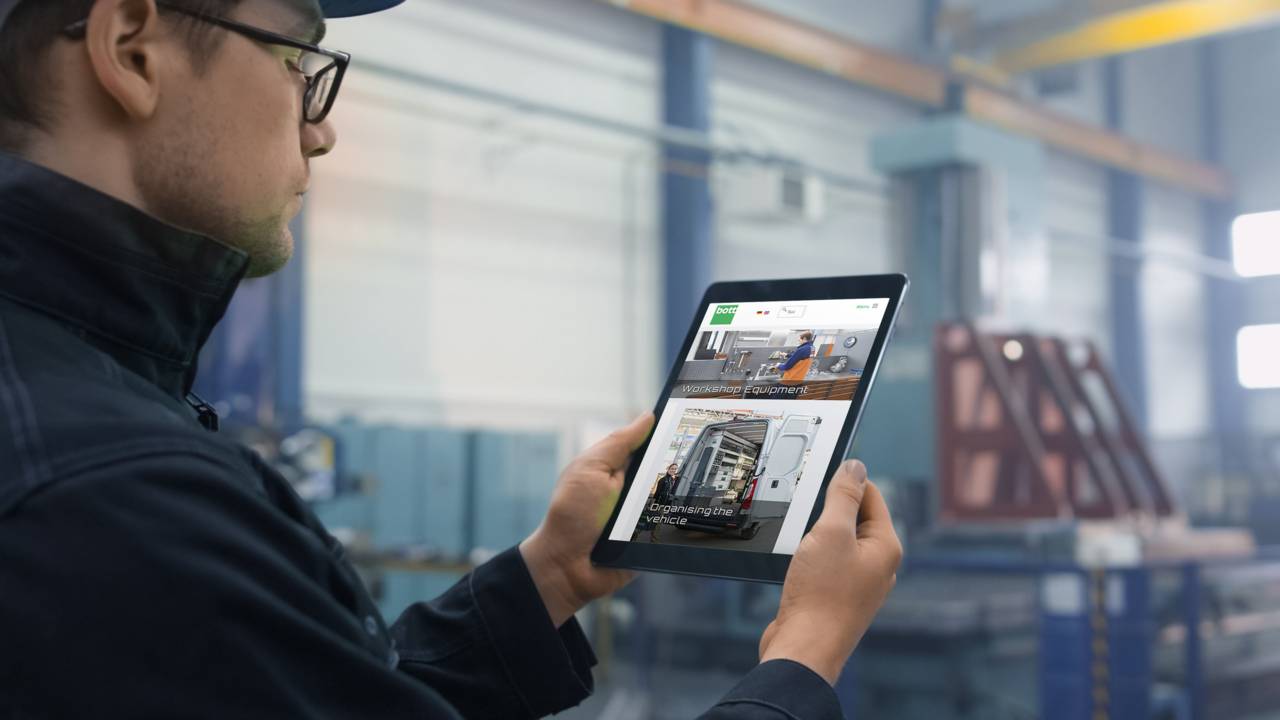Expertise
What is Digital Customer Experience?
Digital Customer Experience (CX) is the sum of a customer’s interactions with your digital channels
B2B customers always search for the easiest, quickest, and most efficient ways of interacting with their suppliers and partners. As the adage goes - time is money. Buyers demand interactions that are simple and streamlined. And they shy away from those that are not. Nowhere is this more true than with your digital channels.
Digital channels prioritize convenience. But it is not as simple as setting up a website, launching a chatbot, and sitting back to watch the sales roll in. You must carefully consider, design, and shape the digital Customer Experience to ensure it works for your buyers.
Here, we examine what digital Customer Experience is, why it is important, and how you can create world-class digital experiences for your customers.

What is Digital Customer Experience?
Put simply, digital Customer Experience (CX) is the sum of a customer’s interactions with your digital channels. It is how they feel about engaging with your brand across its digital touchpoints.
It incorporates all your digital channels and the entire customer journey, from the awareness stage to the relationship-strengthening phase. Businesses with excellent CX deliver digital experiences that are seamless, consistent, and memorable. Poor CX means customers find your digital channels frustrating, cumbersome, and difficult to navigate.

Why Does Digital Customer Experience Matter?
Digital CX is the battleground on which B2B companies are fighting for sales. Let’s look at why that is and why CX is so central to B2B success.
Customers Pay More for Excellent Digital Customer Experience
If you need one good reason to invest in improving your digital CX, this is it. Studies by SalesForce show that 67% of buyers are willing to pay more for a great digital experience. It is as simple as that.
World-class digital experiences can convince customers you are their best bet. Even when your competitors can beat you on price. In the B2B sector, buyers understand the value of a seamless purchasing process and a strong relationship with their suppliers. They are big factors in B2B decision-making.
As the gap grows between those companies that invest in digital CX and those that do not, businesses in the latter camp risk losing everything. Improving digital CX as part of your digital transformation is not a time-limited process. There is no end in sight. It is an ongoing process.
Those businesses that realize the power of digital customer experience too late will give themselves too large a mountain to scale and too great a gap to close. This will prove disastrous. B2B companies must recognize that customers are prioritizing digital CX sooner rather than later.
Loyal Customers Mean a Higher Lifetime Value
Investment in digital customer experience results in more rewarding customer experiences and more satisfied customers. In turn, this leads to more loyal customers and a stronger attachment to your brand. And loyal customers are worth more to your business.
According to Gartner®1, “demonstrating the value of lifting customer perception using VoC data is key to securing budget and encouraging a customer-centric approach. For example, the head of customer experience at a B2B SaaS organization that serves tens of thousands of small to midsize businesses uses this process to provide “data-driven insights that promote the economics of loyalty and satisfaction. His analysis demonstrates that promoters churn 40% less, spend 50% more and deliver an improved LTV of $5,198 compared with detractors."
As buyers increasingly demand that elements of B2C CX be incorporated into the B2B customer journey, we can expect to see a similar sort of impact in the B2B sector. If you want to improve customer loyalty and increase LCV, a focus on digital CX is the way to go.
[1] Gartner, 3 Steps to Prove the ROI Business Case of Your Customer Experience Programs. Published 5 August 2022 By Augie Ray. GARTNER is a registered trademark and service mark of Gartner, Inc. and/or its affiliates in the U.S. and internationally and is used herein with permission. All rights reserved.
Service-related Issues Lose Customers
Pricing and product issues can be overcome. Service-related problems are a business killer. While this is true for B2C, it is particularly pertinent in B2B. The relationship between buyer and supplier has always been a key factor in determining B2B success.
Historically, that relationship was face-to-face. Or, at least, person-to-person. Strong connections were forged over the telephone or via direct correspondence with a sales rep. Today, the relationship is digital. And buyers are not willing to settle for anything less than the best.
The complexity of the B2B customer journey means there is far more service delivery involved. While the B2C journey is typically short and sweet, B2B buyers need a significant amount of information (and conduct plenty of research) when making purchasing decisions.
Whether it is bespoke pricing quotes, detailed product descriptions, or challenging logistics arrangements, B2B suppliers are under pressure to meet the unique needs of their customers and tailor every aspect of the customer journey to their clients. This means providing high-quality digital CX.
Digital CX is not nice-to-have, nor is it going above and beyond. It is essential to modern B2B operations. Ignore your digital CX and you will lose customers.

Digital Customer Experience vs. Customer Experience
Digital CX is part of the wider Customer Experience. CX, as a whole, encompasses all customer interactions with your business. Not just those they conduct via digital channels. It includes your telephony channels, brick-and-mortar premises, and a variety of other non-digital channels.
While digital CX can and should be considered on its own, you must also think about how it rolls into your wider CX. Here, consistency is key. Customers do not distinguish between digital and non-digital channels. They view your brand as a single entity. It does not matter that your digital channels are firing on all cylinders if the customer has a terrible experience when they pick up the phone.
Your brand must express itself consistently across all channels.
In this respect, omnichannel ideas are a useful reference. The omnichannel approach emphasizes seamless transitions between all channels. Not just digital channels. If a buyer picks up the phone and reaches your IVR (interactive voice response) menu, the telephony system should be able to connect them to digital self-serve options. Likewise, if your Chatbot cannot resolve a customer inquiry, it should be able to quickly connect the customer to an agent over the phone.
Digital customer experience is an important business area in its own right. But B2B companies must never forget that it is also part of a much larger customer experience.

Digital Customer Experience Strategies and Best Practices
If you want to implement first-rate digital CX across your organization, there are several best practices and strategies you can employ. In most cases, your first step is ensuring you know your customers.
1. Know Your Customers
You cannot design rewarding customer experiences without first understanding your customers. How can you build satisfying processes, publish engaging content, and provide adequate customer support if you do not understand what they want and how they behave?
What do your customers need to make decisions? What do their typical workflows look like? How many people are involved in the purchasing decision? Where do they go for information relating to products?
You can acquire this information by looking at historical data and requesting buyer feedback. Examine channel usage data and identify how and when buyers use certain channels. Talk to your customers about what they want and need from your services. Explore how buyers transition between channels at different moments in the customer journey.
Knowing your customers is key to excellent digital customer experience . Take your time to research and understand how you can best serve buyers.
2. Tailor Content and Processes to the Customer Journey
B2B buyers have different needs at different stages of the customer journey. They consume distinct types of content and prefer particular channels. In the process of developing a deeper understanding of your customers, you should discover what motivates them at the various stages of their journey.
Now, you need to design, refine, and hone your digital CX to reflect those needs and motivations. Can customers find the content they want quickly? Do they receive the support they need, when they need it? Can they use their preferred channels to complete tasks?
Most importantly, are your digital channels optimized to ensure the customer journey is as smooth and seamless as possible?
3. Personalize Wherever Possible
92% of B2B buyers now expect suppliers to deliver digital experiences that resemble those in the B2C sector (Wunderman Thompson). This means delivering a more personalized experience.
B2B buyers are like everyone else. They are strapped for time and have little patience with businesses willing to waste it. Irrelevant content frustrates them. They want content that helps them make an informed purchasing decision. Nothing more, nothing less.
In today’s B2B environment, that means pushing personalized content to individuals within the buying team. You need to provide them with value and demonstrate your own worth by making it easier for them to choose your products.
4. Focus on omnichannel
The omnichannel approach is central to modern digital experiences. McKinsey reports in its B2B Pulse Survey that: B2B buyers use up to and sometimes more than ten channels, including online and digital, as part of any given purchase, which is double the number of channels five years ago, and up from seven channels only two years ago They conduct research on social media channels, sales portals, and websites. They reach out via email and live chat. They look for support in knowledge bases and through Chatbots.
The ability to move seamlessly between these channels is key to creating satisfying digital experiences. However, the omnichannel approach is not just about the customer. You must also ensure that data and your employees can move between channels.
Customer actions in one channel should generate data that feeds into a central repository, which you then use to inform interactions in other channels. Likewise, your sales and marketing team must be able to draw on information gathered from a wide range of channels.
To achieve this, identify obstacles to the free movement of customers, data, and employees between channels and eliminate them. Break down silos and connect the separate parts of your organization into a unified whole.
5. Collect customer feedback
Customer feedback improves your services by ensuring you understand where your current digital CX excels and where you can improve it. Listening to your customers and acting upon the feedback they provide also shows that you are committed to improving the customer experience.
You can gather feedback in any number of ways. Send out post-interaction surveys via email, implement automated feedback mechanisms after every chatbot interaction, and request direct consultations with customers. The more you learn from them, the more you can refine your CX and create digital systems that fully deliver for your customers.
Current Digital Customer Experience Trends
As we already mentioned, digital transformation is not static. It is an ongoing process. Your goals change as the technology available to you evolves. There are trends - concepts are more or less important depending on customer needs and tech development.
More self-service
B2B buyers are conducting an increasing amount of research independently. They tend to engage sales reps much later in the buyer process. Consequently, they prefer self-serve channels earlier in the journey. These channels include chatbots, Digital Sales Rooms, and knowledge bases.
In response, B2B suppliers are implementing a greater range of self-serve options. However, that does not mean sales reps are no longer relevant. Instead, their role is shifting…
Sales and Marketing are merging
In B2B, experts have touted the idea of merging sales and marketing teams for some time. But it has taken time for companies to recognize this move’s value. Today, an increasing number of organizations are merging sales and marketing teams to focus marketing and deliver more personalized and effective marketing messages.
In the short term, this is the result of the COVID crisis. As the pandemic forced more B2B buyers into digital channels, companies were forced to adapt their strategy to focus more on delivering value through those channels. Digitally-led research and virtual interactions displaced the traditional sales process.
But this shift is also a result of long-term trends. Most notably, the rise of big data. Traditionally, we valued salespeople for their interpersonal skills, customer insights, and professional networks.
But data analytics provides a deeper insight into customer behaviors, preferences, and desires than salespeople ever could. And it ensured traditional sales functions were slowly absorbed by marketing teams that could target solutions, services, and content to individual customers. No more cold calls and scattergun email marketing campaigns. Instead, personalized marketing and targeted content are the future.
That is not to say traditional sales is dead. But the boundary between sales and marketing functions is becoming increasingly blurred. Deals still need to be closed and leads converted, but the way that occurs is changing. B2B businesses must change, too.
Less selling, more facilitating
There has also been a fundamental shift in how B2B companies approach selling. In the past, the hard sell was crucial. You pushed your business and its products on buyers. Today, B2B organizations are switching to focusing on facilitating purchases. Rather than throwing reasons to purchase at potential buyers, you are removing obstacles to purchase. There is less convincing and more facilitating.
Digital CX Tools
Many tools can help improve your digital CX and transform your virtual operations. However, we want to highlight three technologies that we believe will have the biggest impact on your digital transformation
Digital Experience Platforms
Digital Experience Platforms (DXPs) are integrated software solutions that empower your business to build, manage, and deliver great digital experiences across all your channels. They feature a range of tools that ensure you can optimize the customer journey and push personalized content through every digital touchpoint your customers interact with.
Ibexa DXP is the perfect example. Boasting a modular design that allows you to scale your digital infrastructure as your need demands, Ibexa DXP brings together all the tools you need to personalize content, shape the customer journey, and customize the e-commerce experience.
Customer Data Platforms
Customer Data Platforms (CDPs) combine all the customer data your company harvests in a single, centralized database. Doing so gives you a complete 360 picture of the customer and a deeper understanding of what they want and why they do what they do.
CDPs extract customer data from all available sources, so all your organization is on the same page and working from up-to-date information. Essentially, it enhances your marketing abilities and helps you better shape customer experiences by ensuring you know your customers.
Headless Architecture
Headless content solutions are also known as Content-as-a-Service (CaaS) solutions. They are cloud-based solutions that decouple content from the way it is presented. With traditional Content Management Systems (CMSs), you create the content in a specific channel. How it presents in that channel is an integral part of the content. Content and presentation are tied together. It makes publishing content across multiple channels time-consuming, laborious, and expensive.
Headless architecture separates the content from the code that determines how it presents, enabling you to publish it quickly and efficiently across multiple channels. It means you can deliver personalized content across multiple channels far more easily. Giving your customers exactly what they want, when they want it.
The B2B Landscape is Changing: Time to Adapt is Now
You cannot underestimate the importance of digital CX. The B2B landscape is changing. Buyers are placing a greater emphasis on digital channels and businesses must respond by investing in superior digital experiences to survive and thrive.
Ibexa DXP is the key to unlocking your digital potential. Designed to equip you with all the tools you need to craft rich and rewarding digital customer experiences, it helps you transform your business into a progressive digital powerhouse that empowers your buyers to reach informed purchasing decisions.
If you would like to learn more about how Ibexa DXP can help your business, do not hesitate to get in touch. Alternatively, check out our extensive collection of Success Stories or request a product demo.